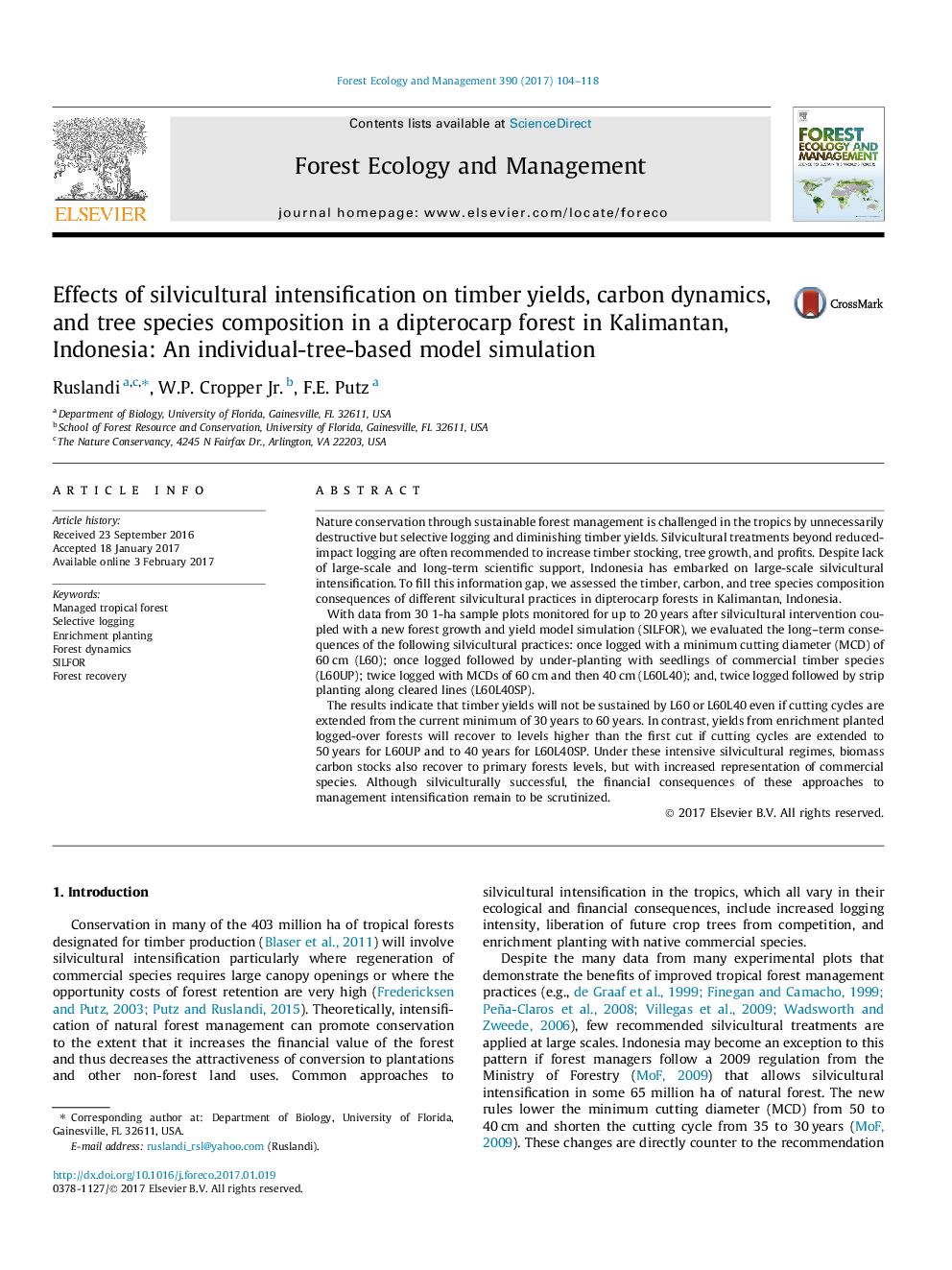| کد مقاله | کد نشریه | سال انتشار | مقاله انگلیسی | نسخه تمام متن |
|---|---|---|---|---|
| 6459514 | 1421368 | 2017 | 15 صفحه PDF | دانلود رایگان |
- Silviculture intensification effects on forest product and services were assessed.
- Timber yields will not be sustained with current logging practices.
- Strip-planted stands will yield more timber than even primary forests.
- Carbon stocks return to pre-intervention levels more rapidly than timber.
- Dipterocarp stocking increased with silvicultural intensity.
Nature conservation through sustainable forest management is challenged in the tropics by unnecessarily destructive but selective logging and diminishing timber yields. Silvicultural treatments beyond reduced-impact logging are often recommended to increase timber stocking, tree growth, and profits. Despite lack of large-scale and long-term scientific support, Indonesia has embarked on large-scale silvicultural intensification. To fill this information gap, we assessed the timber, carbon, and tree species composition consequences of different silvicultural practices in dipterocarp forests in Kalimantan, Indonesia.With data from 30 1-ha sample plots monitored for up to 20Â years after silvicultural intervention coupled with a new forest growth and yield model simulation (SILFOR), we evaluated the long-term consequences of the following silvicultural practices: once logged with a minimum cutting diameter (MCD) of 60Â cm (L60); once logged followed by under-planting with seedlings of commercial timber species (L60UP); twice logged with MCDs of 60Â cm and then 40Â cm (L60L40); and, twice logged followed by strip planting along cleared lines (L60L40SP).The results indicate that timber yields will not be sustained by L60 or L60L40 even if cutting cycles are extended from the current minimum of 30Â years to 60Â years. In contrast, yields from enrichment planted logged-over forests will recover to levels higher than the first cut if cutting cycles are extended to 50Â years for L60UP and to 40Â years for L60L40SP. Under these intensive silvicultural regimes, biomass carbon stocks also recover to primary forests levels, but with increased representation of commercial species. Although silviculturally successful, the financial consequences of these approaches to management intensification remain to be scrutinized.
Journal: Forest Ecology and Management - Volume 390, 15 April 2017, Pages 104-118
